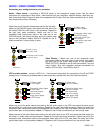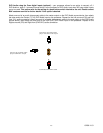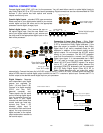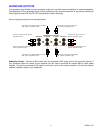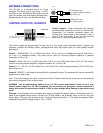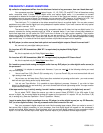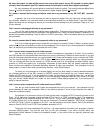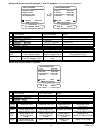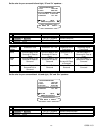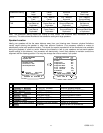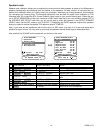
13258 11/01
21
My laser disc player (or other digital source) has only optical output, but my CD recorder (or other digital
recorder) has only coaxial input. Do I need some sort of converter to make direct digital recordings?
No, your processor will convert optical to coaxial and coaxial to optical. The currently selected digital input
(optical or
coaxial) will appear at both of the processor’s digital outputs (optical and coaxial).
Do I need to connect both analog and digital audio from my processor to my CD, DAT, MD, recorder,
etc.?
In general, yes. If all of the sources you wish to record are digital, then you need only connect digital to
your recorder. However, your processor does not provide digital outputs for non-digital inputs. If you wish make a
digital recording from an analog-only source you must also connect analog from your processor (Tape or V1 out)
to your recorder.
Can I connect a phonograph directly to my processor?
No, you will need a separate outboard phono preamplifier. The output of the phono preamp can then be
connected to any analog input on your processor. We recommend our Phono 10 phono preamp. In addition to it’s
superb analog audio processing, it has an option for S/PDIF coax output. Talk to the dealer where you purchased
your processor.
Do I need to connect both S-video and composite video to my processor?
If all of your video equipment has S-video then you need only connect S-video. S-video is a higher quality
video format and you will probably not want to use composite. If all or most of your video equipment is composite
then it is simplest to just connect the composite and omit S-video.
Can I connect mixed composite and S-video sources?
Yes, but your processor will not convert S-video to composite or composite to S-video. If your monitors
and VCRs accept only composite video then there is no point in connecting S-video from other sources. If you use
mixed S-video and composite sources you must connect both
S-video and composite to your monitors and VCRs.
You will need to change your monitor or VCR S-video / composite inputs manually when you change sources.
This can normally be done via the monitor’s or VCR’s remote control (or the supplied universal remote). Some
monitors or VCRs may require you to physically disconnect S-video before they will accept composite video.
Some monitors are capable of automatic switching between S-video and composite. Your processor must be
setup properly in order to work with auto switching monitors - refer Setup Displays.
To assist you, the processor’s on-screen display will tell you what video is currently selected whenever
you change sources or hit the SEL (remote) or ENTER (remote or front panel) key, but it cannot switch your
monitor or VCR input for you. If you are watching S-video, but the source is composite video only, you will see
“Switch Monitor to Composite” on your Monitor. If you are watching Composite video but your source is S-video
only, you will see “Switch Monitor to S-video” on your monitor. These displays appear only if your processor is
setup for manual monitors.
Can I connect mixed composite and S-video monitors and VCRs?
Yes, but you must connect both S-video and composite from all of your sources - your processor will not
convert between S-video and composite. Refer to the previous question if not all of your sources have both S-
video and composite outputs.
For example, it is common to have an S-video monitor and a composite VCR. Connect the monitor to the
Zone 1 (A) S-video and composite outputs and the VCR to the V1 or TAPE composite output. The composite
inputs will appear at the composite outputs for TAPE and V1. (The S-video inputs also appear at the TAPE and
V1 S-video outputs, but, in this example, they are not connected.) To prevent feedback, TAPE IN will not appear
on TAPE OUT and V1 IN will not appear on V1 OUT - this also applies to the audio outputs. Zone 2 (B) works the
same for Zone 2 (B) OUT and V2 OUT with feedback prevention on V2.
Things get a bit more complicated for the Zone 1 (A) output because it contains your processor’s internal
on-screen display system. You must be sure that you tell your processor if you have a monitor which can
automatically switch between S-video and composite outputs, or one which must be manually switched (see
Setup Displays)




